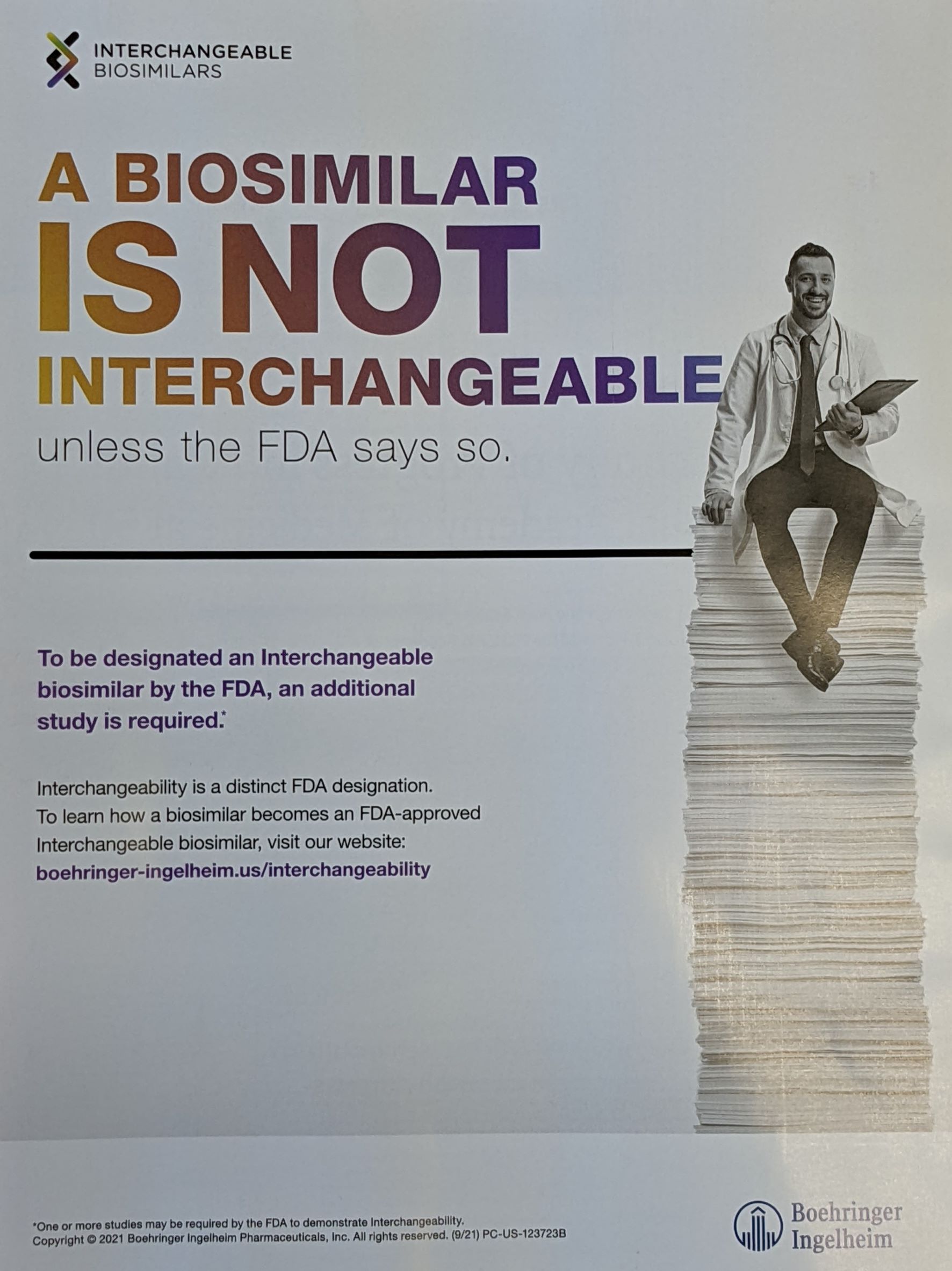The opioid crisis and patient abandonment
A perspective from a February issue that I originally missed highlighting the plight of patients who have been on a long-term opioid regimen for chronic pain. They are often stable, but it is when their physician retires or leaves that all hell breaks loose because, in this day and age, they cannot find another physician to continue the regimen. For someone who has been taking large doses of opioid for many years, going cold-turkey, or even tapering, is just not an option. These folks end-up in the ED, or buying what they need illegally taking the risk of using tainted drugs. It’s a nightmare. Inherited Patients Taking Opioids for Chronic Pain — Considerations for Primary Care
On the importance of the conjugate
Antibody drug conjugates (ADCs) have seen a renaissance over the last few years with a significant share of the late pipeline focused on rescuing an under-performing antibody with a cytotoxic conjugate. However, a different scenario is playing out in the case of the Her+ breast cancer therapeutic trastuzumab (Herceptin, Roche) which was initially coupled with emtansine (Kadcyla, Roche), an antitubule agent, for added activity in patients who progress on Herceptin. But there are alternatives to tubules as the target and a new version combines trastuzumab and deruxtecan (Enhertu, Astra Zeneca and Daiichi Sanko) which is a topoisomerase inhibitor. Enhertu was granted accelerated approval in late 2019, but now come the data from a phase 3 head-to-head study between Enhertu and Kadcyla in patients who have progressed on trastuzumab + pembrolizumab. And it’s spectacular: I have rarely seen Kaplan-Meier curves diverge so sharply when the control is not a placebo; almost every patient on Enhertu had at least stable disease and many had complete responses. Could we have more of this switching around the conjugates to see what works best? Trastuzumab Deruxtecan versus Trastuzumab Emtansine for Breast Cancer
Too much of a good thing? The PD-1/L1 space sure is crowded
The remarkable clinical and commercial success of Keytruda and Opdivo has triggered an unprecedented rush to exploit the PD-1/L1 inhibition mechanism of action with 30+ antibodies and 2000+ related clinical trials. Two leaders from the office of oncologic diseases (Beaver and Pazdur) write in with a perspective of how the current state of affairs is suboptimal flagging:
- A tremendous level of redundancy in clinical development between products with no effort in establishing relative performance through head-to-head studies,
- The use of inconsistent in-vitro diagnostic tests for patient stratification,
- Use of combination therapies when there is insufficient information on the activity of the investigational agent by itself,
- Overuse of the accelerated pathway resulting in dangling accelerated approval for which confirmatory studies may or may not be done in a timely manner,
- Trials that do not include US patients as a way to avoid having to conduct non-inferiority trials vs. the US standard of care (e.g., against Keytruda or Opdivo).
This “me-too” phenomenon is not a new thing in pharma; drug development is such a high-risk enterprise that any path that reduces risk will draw in players. While it is possible to reduce these effects (e.g., by considering pivotal trials entirely conducted in China inadequate), much is a by-product of a system where the private sector leads the discovery of new therapeutics. Lack of centralized control will create duplication for sure – but centralized control has its own issues: we haven’t seen many new therapeutics come out of countries with state-directed drug development. The Wild West of Checkpoint Inhibitor Development
A highly effective drug for early treatment of covid
Definitive results from a large, placebo-controlled trial of nirmatrelvir (a protease inhibitor boosted with ritonavir, Paxlovid, Pfizer) showing remarkable efficacy in 2246 high-risk, unvaccinated patients treated within 3 days of symptoms onset. There was a reduction of the hospitalization rate of 90% in the treated group with no deaths (13 died in the placebo). Pfizer on a roll. Oral Nirmatrelvir for High-Risk, Nonhospitalized Adults with Covid-19
Less invasive care is sometime (often?) ok
…and usually much cheaper. Achilles tendon rupture is usually treated with a surgical intervention, but a study from Norway in 554 patients randomized to operative and non-operative treatments showed similar functional outcomes at 12 month (though the non-operative group had a higher rate of re-rupture). Nonoperative or Surgical Treatment of Acute Achilles’ Tendon Rupture
An unusual ad about biosimilar interchangeability
Unless there is specific request from the prescribing physician not to, small molecule drugs can be substituted by a pharmacist between branded product and generic products (when they exist). It is not the same for biologics and biosimilars as highlighted in an intriguing ad from Boehringer Ingelheim (BI) on the back cover of the April 14 issue. For that to happen, the FDA has to label the biosimilar as interchangeable with the branded product which requires additional data. Obviously, BI went through the trouble of getting that label for its adalimumab (Humira, Abbvie) biosimilar and is looking forward to seamless substitution in Humira scripts in 2023 whereas the other biosimilar manufacturers will have to slog it out to get physicians to actually prescribe their products.
The New England Journal of Medicine is a premier weekly medical journal covering many topics of interest to the health sector. In this monthly series we offer an opinionated perspective on selected highlights that might be of interest to our clients and others.

